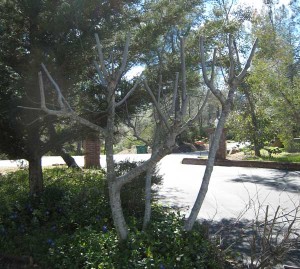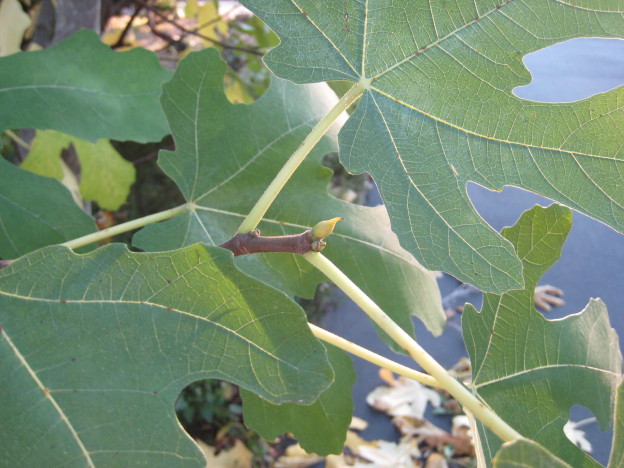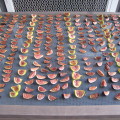Time of Pruning
- figs are pruned every year in early spring, after any danger of prolonged frost has passed.
- In cool climates, summer pruning is also necessary. see “Cool Climates: Summer Pruining”, below.
Warm Climates:
- Shape Options:
- informal bush
- Young Trees (2-3 years old):
- start with a fig that has 3 or 4 well-spaced laterals of equal vigor arising from the main stem, at a height of 1.5-3 ft from the ground.
- pruning in late winter or early spring (after severe weather has passed), form a basic bush framework, as for an apple bush, with 8-10 main branches arising at or near the trunk.
- Establishded fig trees:
- prune in spring
- cut spreading branches to upright shoots
- leave growth in the center to give protection from sun scorch
- Goal: cut to keep the bush as dense as possible
- Clear trunk up to 1.5-2 ft
- cut back any damaged or broken shoots to healthy wood, making sure to favor upright-facing buds or shoots
- thin out badly placed shoots and any crossing branches, but keep growth dense for shade.. A balanced crown will have 8-10 well-spaced branches
- cut any leggy, bare shoots or old branches back to one bud (2-3″) to encourage new growth
- Young Trees (2-3 years old):
- half-standard with trunks of about 2-4 ft.
- informal bush

Here’s my first attempt at taming the 20-30 foot fig tree. The tree has 3 main trunks, all very sturdy. I pruned the one to the right as a half-standard; the rest as informal bushes.
Cool Climates:
- since figs require long, hot summers to bear heavy crops, the tree must be in a favored site and pruned to be very open in habit to let in light.
- Shape Options:
- Bush:
- Young Trees (2-3 years old):
- start with a fig that has 3 or 4 well-spaced laterals of equal vigor arising from the main stem, at a height of 1.5-3 ft from the ground.
- prune after severe weather has passed (in late winter or early spring), forming a basic bush framework, as for an apple bush, with 8-10 main branches arising at or near the trunk.
- Established Fig Trees (Spring)
- Goal: cut to keep the bush as spreading and open in habit as possible
- Clear trunk up to 1.5-2 ft
- cut back any damaged or broken shoots to healthy wood, making sure to favor outward-facing buds
- thin out badly placed shoots and any overcrowded areas, particularly in the center of the bush to let light in. A balanced crown will have 8-10 well-spaced branches
- cut any leggy, bare shoots or old branches back to one bud (2-3″) to encourage new growth
- Young Trees (2-3 years old):
- Bush:
- Summer Pruning: : all new shoot tips are pinched back to five or six leaves. This allows more light to get in and reduces the production of the second crop of unwanted figs (because they won’t ripen since the summer isn’t long enough or hot enough). This makes the fig form more sideshoots with more leaf axils, which means more fruits next year.Pick of any larger, green figs on the main shoot so that the tree concentrates on the embryo fruits.
Dwarfing
- Figs are grown from cuttings, not grafted, so in order to dwarf, restrict the root system. This can be done by growing in containers or planting in a brick or concrete lined pit 2 ft square. the base of the pit should be broken, not solid.
Fruiting Habit
- Three distinct fruiting stages may be present simultaneously:
- embryo fruits that overwintered in leaf axils from the previous season will be the first to ripen
- more fruits form in the spring on new growth that ripen for a main crop late in the summer, if it’s in a hot climate
- new embryo fruits form near the tip of the new shoots for ripening next season
- In cold climates, pruning is concentrated on encouraging the embryo figs to form, giving these the best ripening conditions in the second year.
Sources:
| Footnote | AHSPT | |||
|---|---|---|---|---|
| Title | American Horticultural Society Pruning & Training | |||
| Author(s) | Christopher Brickell, David Joyce | |||
| Buy Now | ||||
| Copywrite | 1996 |





Vary good explanation. I enjoy it vet very much. Thank you!